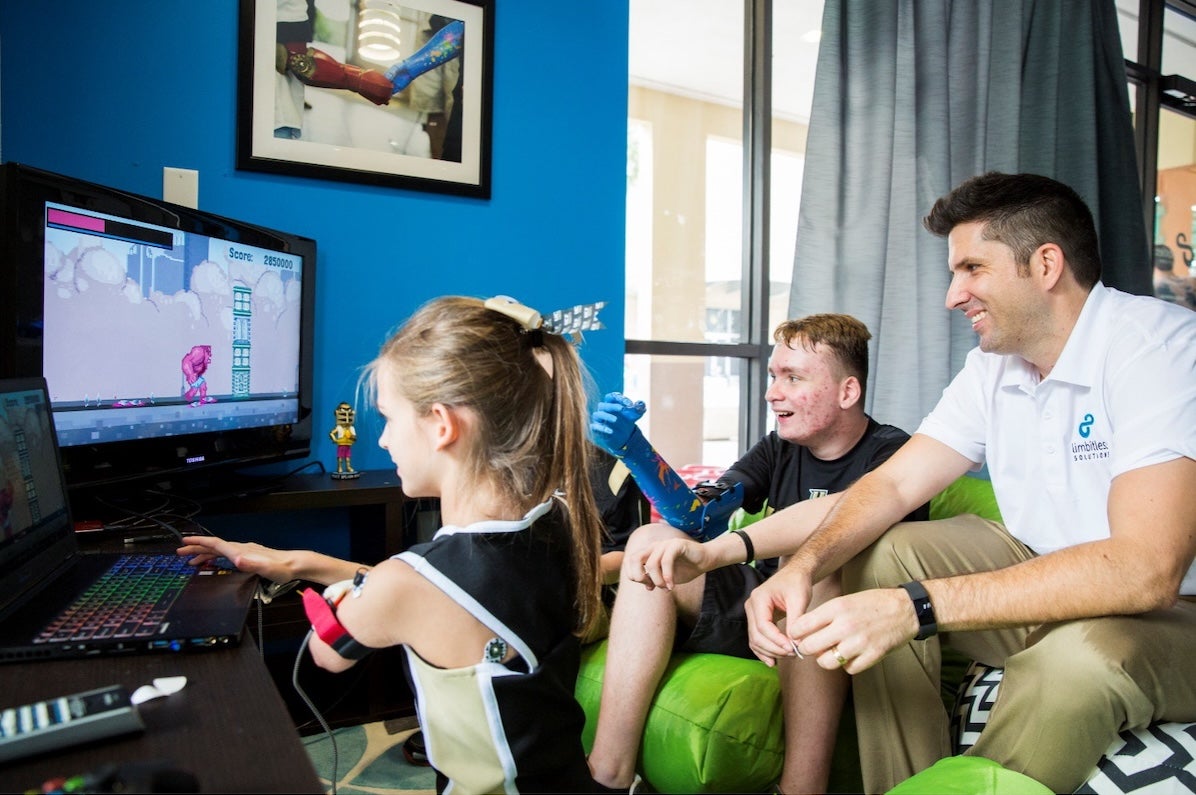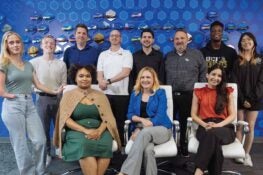This year, marks the 10-year anniversary of Limbitless Solutions – a UCF-based nonprofit dedicated to empowering individuals through accessible technology. By engaging UCF undergraduate students from a variety of disciplines, Limbitless exemplifies the power of collaboration between science, technology, arts and humanities.
This milestone has given Limbitless cause to celebrate. The organization is hosting a 10-year anniversary gala at UCF’s Rosen College of Hospitality Management Oct. 17. During the event, Limbitless alumni, partners and sponsors, UCF leadership, and bionic families will walk the blue carpet, dive into interactive experiences, hear inspiring stories and explore Limbitless’ vision for the future.
Bridging Art and Technology
At the heart of Limbitless’ mission is the use of creativity to drive innovation and enhance technology, highlighting the essential role UCF’s College of Arts and Humanities (CAH) plays across disciplines. This philosophy was advocated by Katie Manero ’09, a graphic design alumna from UCF’s School of Visual Arts and Design (SVAD). She encouraged Limbitless executive director Albert Manero ’12 ’14MS ’16PhD to engage the UCF arts community to enrich the organization’s mission.
“At Limbitless, we’ve seen firsthand how visual arts and design play a crucial role in driving innovation across disciplines.” — Matt Dombrowski ’05 ’08 MFA, Limbitless Solutions creative director
One of the first individuals Manero contacted was Matt Dombrowski ’05 ’08MFA, SVAD assistant director and associate professor of emerging media. In 2015, Manero sought Dombrowski’s assistance in recruiting student volunteers to paint Limbitless’ 3D-printed bionic arms, which the organization donates to children with limb differences. Dombrowski eagerly agreed and soon proposed an innovative concept that redefined the role of creativity at Limbitless: developing immersive video games that utilize electrical impulses from the muscles to teach kids to use their bionic arms. Since then, Dombrowski has served as the creative director at Limbitless.
“At Limbitless, we’ve seen firsthand how visual arts and design play a crucial role in driving innovation across disciplines,” Dombrowski says. “By breaking down the silos between science, technology and visual communication, we enable creativity to be a force for positive societal change. The empathy, storytelling and human-centered design the arts bring to the table are not just complementary — they are vital.”
This approach not only made the learning process enjoyable for bionic kids but also fostered a sense of empowerment and confidence among the users. What once felt like a routine medical appointment transformed into an interactive and playful experience.
“Our award-winning training games are designed to help bionic kids learn to use their prosthetics in a fun and safe environment. Creating that sense of safety is key to the successful adoption of these technologies, which could not be done without our amazing undergraduate students,” Dombrowski says. “I’m immensely proud of the dozens of SVAD and CAH students who have contributed not only to the development of these video games but also to the design of 3D-printed bionic arms and social advocacy. These students, now alumni, have gone on to their careers with an empathy-focused, creative mindset — skills they honed at both SVAD and Limbitless.”
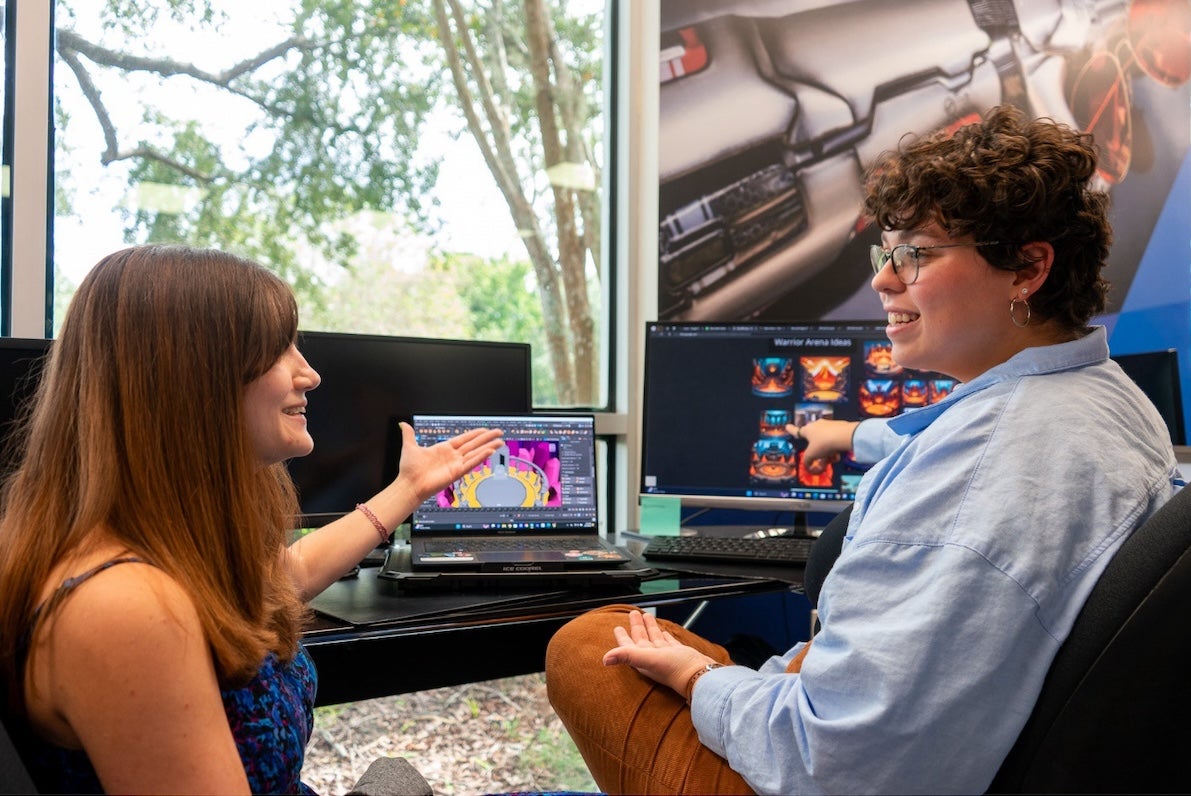
Empowering Future Innovations
Over the past decade, dozens of arts and humanities undergraduates have played a crucial role in expanding Limbitless’ mission — whether by designing video games, painting bionic arm sleeves, creating accessible webpages or producing engaging social media content.
One of these students was Stephanie Valderrama ’16, an alumna in graphic design, and visual arts and emerging media management, who also served as one of the first student interns at Limbitless.
“I never felt I had to be an engineer to be part of the [Limbitless] movement. It was clear the creative side was just as needed as the engineering side,” Valderrama says. “At Limbitless, I learned to put human emotions and connectivity at the forefront of what I designed. You weren’t just looking at a bionic arm that opened and closed; you were also looking at the design that reflected the personality of the child receiving it.”
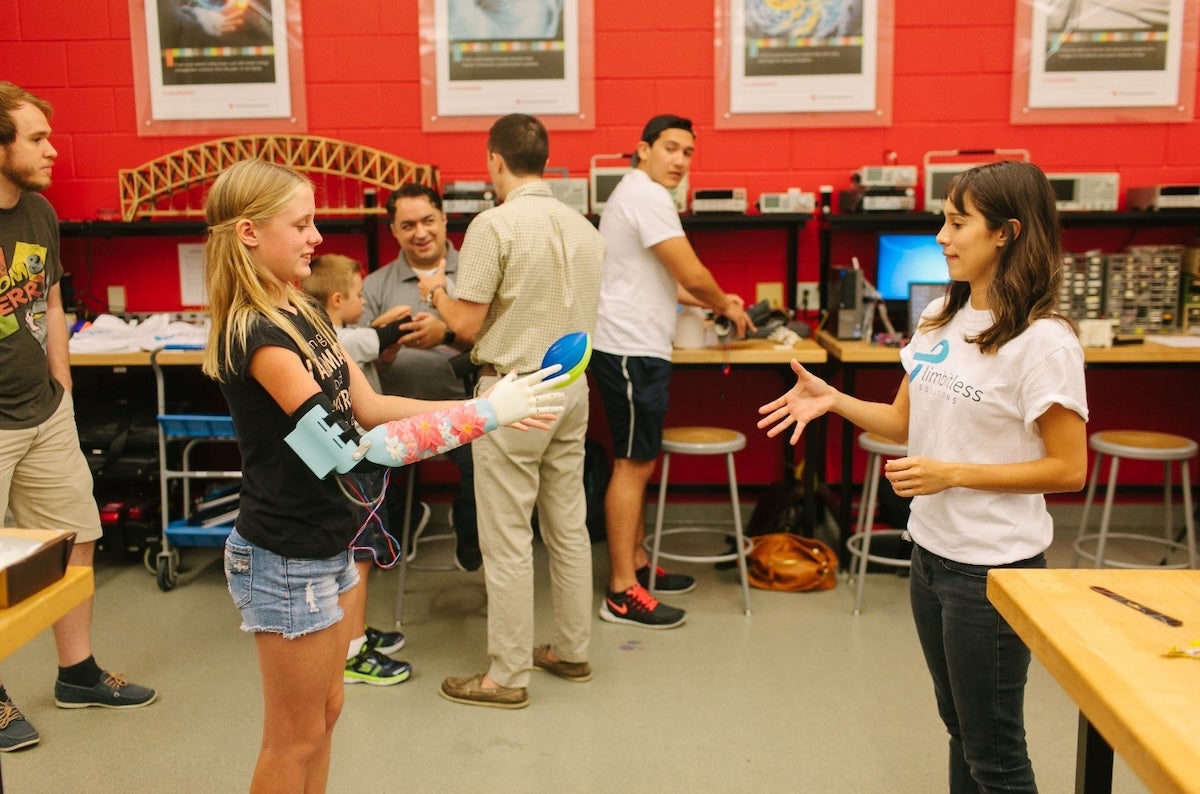
Valderrama now works as a senior product designer at Disney Parks and Experiences in Lake Buena Vista, where she uses user interface and user experience design (UI/UX) to create digital applications for the company.
“I never thought I would end up here. At Limbitless, I learned I loved receiving real-life feedback, which is eventually why I transitioned to product designing. In my role now, we design something and complete user tests to evaluate the product in different environments,” Valderrama says. “I never would’ve known that was something I valued if it wasn’t for my experience at Limbitless.”
Another former Limbitless intern and studio art alumna, Anna Stafford ’19, was drawn to Limbitless for the opportunity to make a meaningful impact.
“It made a lot of sense to intern at Limbitless because I was able to use my skills in a professional setting alongside people who brought different skills to the table,” Stafford says. “That made me really excited because I felt there was a space for me to use the skills I felt like I had to be using, but I could use them in a way that was going to help people and directly impact the world.”
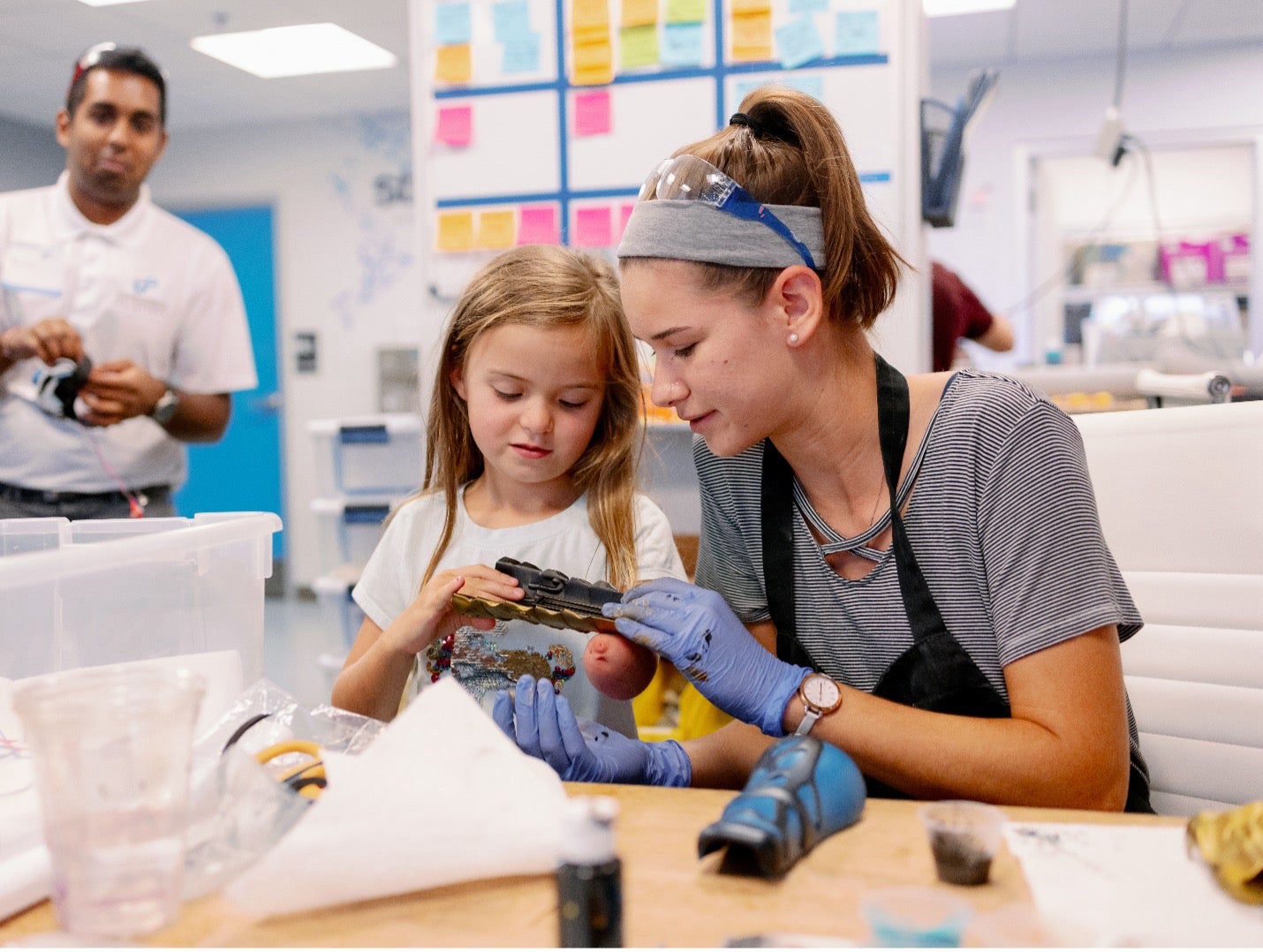
Stafford has applied the skills she gained at Limbitless to her current position as a user experience designer at Cherry, a fintech company that serves the healthcare industry.
“Two huge things I learned both from the College of Arts and Humanities, and Limbitless was the ability to adapt to unfamiliar environments,” Stafford says. “It really has paid off for me professionally because I’ve been able to jump into my career much more seamlessly than I thought possible.”
CAH and SVAD are committed to supporting creatives through real-world industry experiences like those provided by Limbitless. By building on the rich history of traditional arts practices, arts and humanities disciplines prepare students to meet contemporary challenges with innovative solutions. The collaboration between UCF and Limbitless has shown numerous students the power of creativity in their work. Like Valderrama and Stafford, many UCF and Limbitless alumni are now harnessing creativity to make a positive impact.
